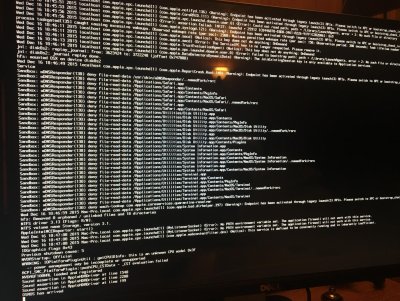- Joined
- Nov 30, 2015
- Messages
- 3
- Motherboard
- Asrock x99 Extreme4
- CPU
- i7-7820k
- Graphics
- MSI Geforce GTX 950 2Gb
- Mac
- Classic Mac
- Mobile Phone
This is my first hackintosh and I know the x99 platform isn't the easiest to work with, but I want to do it. I followed this guide HERE
My Setup:
I was trying different bootflags and actually got the OSX to install, but when the first reboot happened after install it froze. I'm actually really confused because sometimes I have to reboot the computer one or two times before the boot actually works.
Here is a picture of the screen I'm stuck at I'm currently using these bootflags
"npci=0x2000 -v -cpus=1"
I've tried adding nv_disable =1 and using npci=0x3000 but I still not luck
Here is where my screen freezes

I've read that "DSMOS has arrived" means the graphics card has an issue, but I've also read that people have no issues with the NVIDIA GEFORCE GT 610
My Setup:
- ASRock X99 Extreme4 LGA 2011-v3
- MSI GeForce GTX 950 (I'm currently using a Nvidia Geforce GT610 for easier install and will use the GTX 950 after)
- Intel Core i7-5820K Haswell-E 6-Core 3.3 GHz
I was trying different bootflags and actually got the OSX to install, but when the first reboot happened after install it froze. I'm actually really confused because sometimes I have to reboot the computer one or two times before the boot actually works.
Here is a picture of the screen I'm stuck at I'm currently using these bootflags
"npci=0x2000 -v -cpus=1"
I've tried adding nv_disable =1 and using npci=0x3000 but I still not luck
Here is where my screen freezes

I've read that "DSMOS has arrived" means the graphics card has an issue, but I've also read that people have no issues with the NVIDIA GEFORCE GT 610
